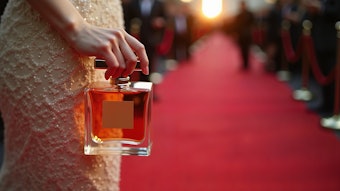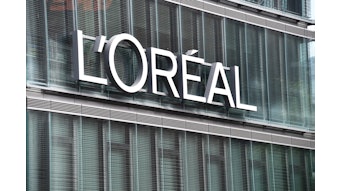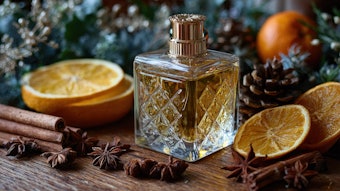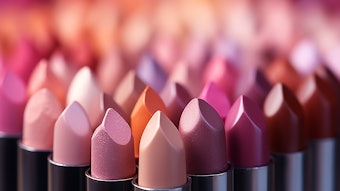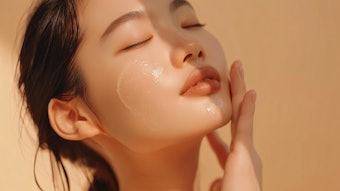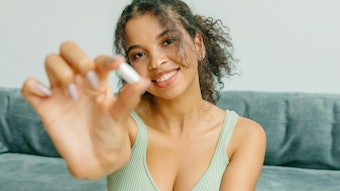
In the summer, a beauty consumer’s fancy often turns to thoughts of what’s bright, fresh and fun, like sunny nail polishes, fruit-glazed lip glosses and beachy highlights, but they also turn to thoughts of more serious things, i.e.: sun safety.
With awareness of UV light-induced skin damage at an all-time high, and innovations in the category emerging on a daily basis, beauty consumers are eager for unique solutions to protect their skin, every day. It’s an exciting time for sun products in our industry.
85% of women are concerned to very concerned about sun damage to their face.
This article highlights data from an original study of more than 4,500 U.S. females, conducted by The Benchmarking Company in March 2016, where women were asked dozens of questions about their sun care habits, preferences, motivators, influencers and their future sun care wish list.
She Looks at Sun Differently
Fifty years ago, ads for sun products were quite a bit different than today—and consumers wanted different things. In 1966, the mark of a good sun care product was one that promoted a fast, deep suntan, while possibly also protecting against sun burn—and extremely dark suntans were equated with younger-looking skin!
Today, we now know how dangerous this messaging was, and that it’s not just sunburn we need to protect our skin from but all sun exposure. Thankfully, consumers have taken this message to heart—and to their shopping preferences.
30% of women know that uneven skin pigmentation is worsened by sun exposure.
Although a smallish percentage of women admit that they still lay out in the sun (37%), when asked what look is the most attractive, only 3% of women said a deep, dark tan. Instead, nearly half (45%) of women agree that only a slight tint of tan is the most attractive look. Some women (16%) even prefer rosy cheeks and a pink glow to a tan, period.
In fact, 85% of women are concerned to very concerned about sun damage to their face; and 80% are concerned to very concerned about sun damage to their body.
Beauty brands would be wise to consider a sun protection product as part of their core lineup. Consumers want them, we all need them, and the desire for unique options is growing.
But She’s Unclear About the Sun’s Hazards
Although more than a third (or more) of women admit to having some kind of hyperpigmentation, such as sun spots, freckles, age spots, skin discoloration or the like, there unfortunately still seems to be a slight disconnect on just how damaging sun exposure is to the skin and to overall health.
When asked which skin conditions are both caused and worsened by exposure to the sun, answers were mixed. Although 30% of women know that uneven skin pigmentation is worsened by sun exposure, only 15% realize it’s also caused by exposure to the sun in the first place.
Only 9% of women say they wear SPF on their face only when they remember to apply it.
Even more alarming? Only 8% of women with active skin cancer realize it can be caused by sun exposure, and just 5% realize that it is worsened by continued exposure.
Instead, it seems as if beauty consumers have more deeply embraced and understood the anti-aging messages linked to sun damage and, in particular, that exposure to the sun worsens the appearance of wrinkles (40%).
Yet She Still Uses SPF
But it’s not all bad news. Fifty-three percent of women wear SPF on their face on a daily basis, with another 33% wearing it when they expect to be exposed to the sun.
Only 9% of women say they wear SPF on their face only when they remember to apply it. Although the percentage of women wearing SPF every day on their body is dramatically lower (14%) than for the face, the fact that women are using body sunscreen on a daily basis at all is a step in the right direction.
Women are particularly keen on products for the hair and scalp.
Admittedly, her SPF use isn’t perfect, but women feel they understand the difference between health and beauty products with sun protection added (such as an SPF primer) vs. products which are pure sun blocks (64%), and most women are using sun protection, of some kind, every day in their beauty regimen.
Ninety-two percent of women use skin care with SPF, and 70% use facial moisturizer and body products with SPF; 69% use foundation or makeup with SPF; 63% use a dedicated facial SPF.
She Wants to Protect Herself … Differently
Twenty years ago, women might not have been sure about a moisturizer with SPF; today, however, women prefer products with added SPF benefits to a regular sunscreen (75%) and, overwhelmingly, beauty consumers are willing to pay more for products with SPF (85%).
Why? Mostly because these multitasking products can easily be blended into her daily routine (73%), because they offer skin care and SPF benefits (70%), and because these products don’t have that telltale sticky, heavy feel of many traditional sunscreens (62%).
Women would also like products that help correct the appearance of crepe skin on the lower legs (58%), and a self-tanning product that has SPF 30+ and will last for several days, such as over a weekend (48%).
However, there are still a few reasons why she prefers traditional sunscreen over a multitasking product: traditional sun blocks offer sweat-proof/waterproof options (63%), and they offer differing levels of SPF (52%)—which means it’s time to start thinking innovation and product development.
In addition to a daily moisturizer with SPF that is waterproof/sweat-proof and offers varying levels of SPF protection, the SPF-infused products that beauty consumers are most interested in include hair care products (66%); color cosmetics, such as lipstick, eyeshadow and powder (60%); and facial serums (57%).
Women are particularly keen on products for the hair and scalp. Seventy-three percent are very interested in a product that would provide UV protection specifically to the scalp, while 70% are interested in a product that provides both moisturization and SPF protection to ward off flakes/peeling of the scalp. A smaller percentage (67%) would like a product to help prevent hair color from fading in the sun.
She Wants Innovation
Beauty consumers are also very interested in some outside-the-box sun products, such as ingestibles. Thirty-six percent of women would like an oral dietary supplement that would provide hours of protection against UV rays from within—a relatively new way to think of protecting against sun damage.
Women would also like products that help correct the appearance of crepe skin on the lower legs (58%), and a self-tanning product that has SPF 30+ and will last for several days, such as over a weekend (48%).
The shift in attitude toward SPF products over the last 50 years is indicative of where sun care research and development needs to go, and just how important innovations in sun protection products are to beauty consumers today.
Women want options which will let them keep tanning safely—if such a thing even exists—but those products had also better work very hard at protecting and safeguarding the skin, offer anti-aging benefits, and be elegant and comfortable to use.


